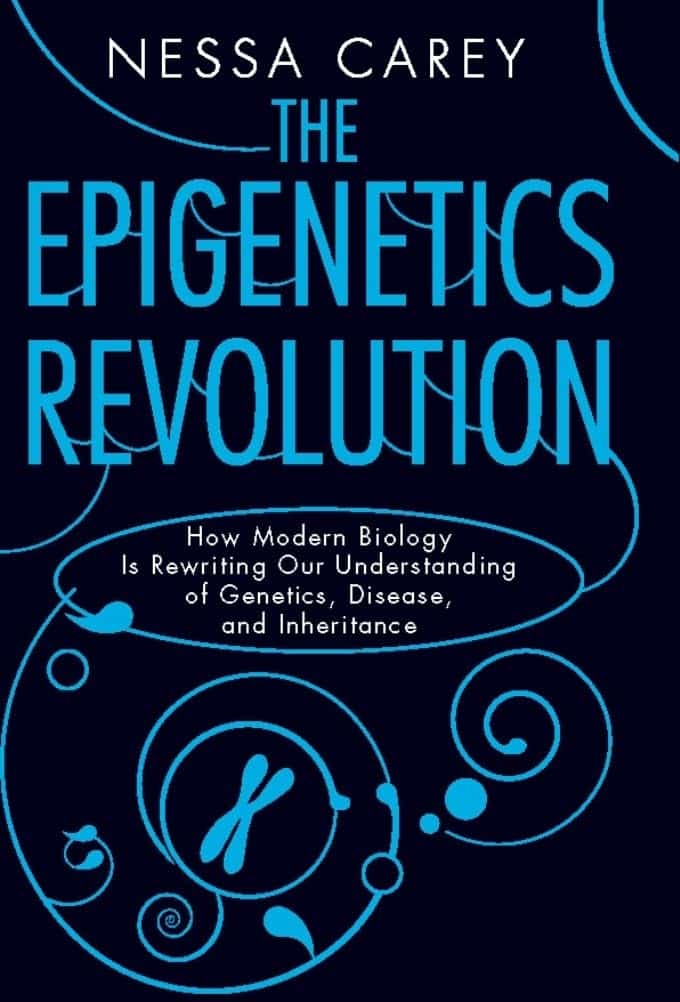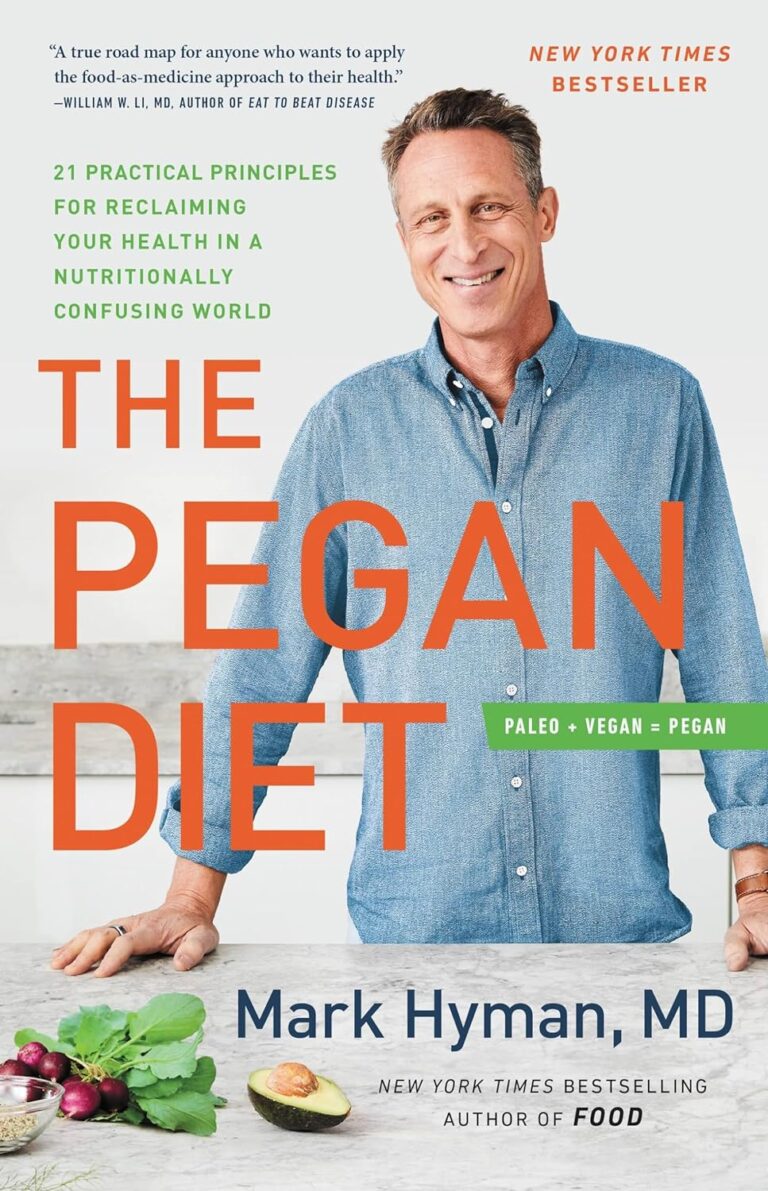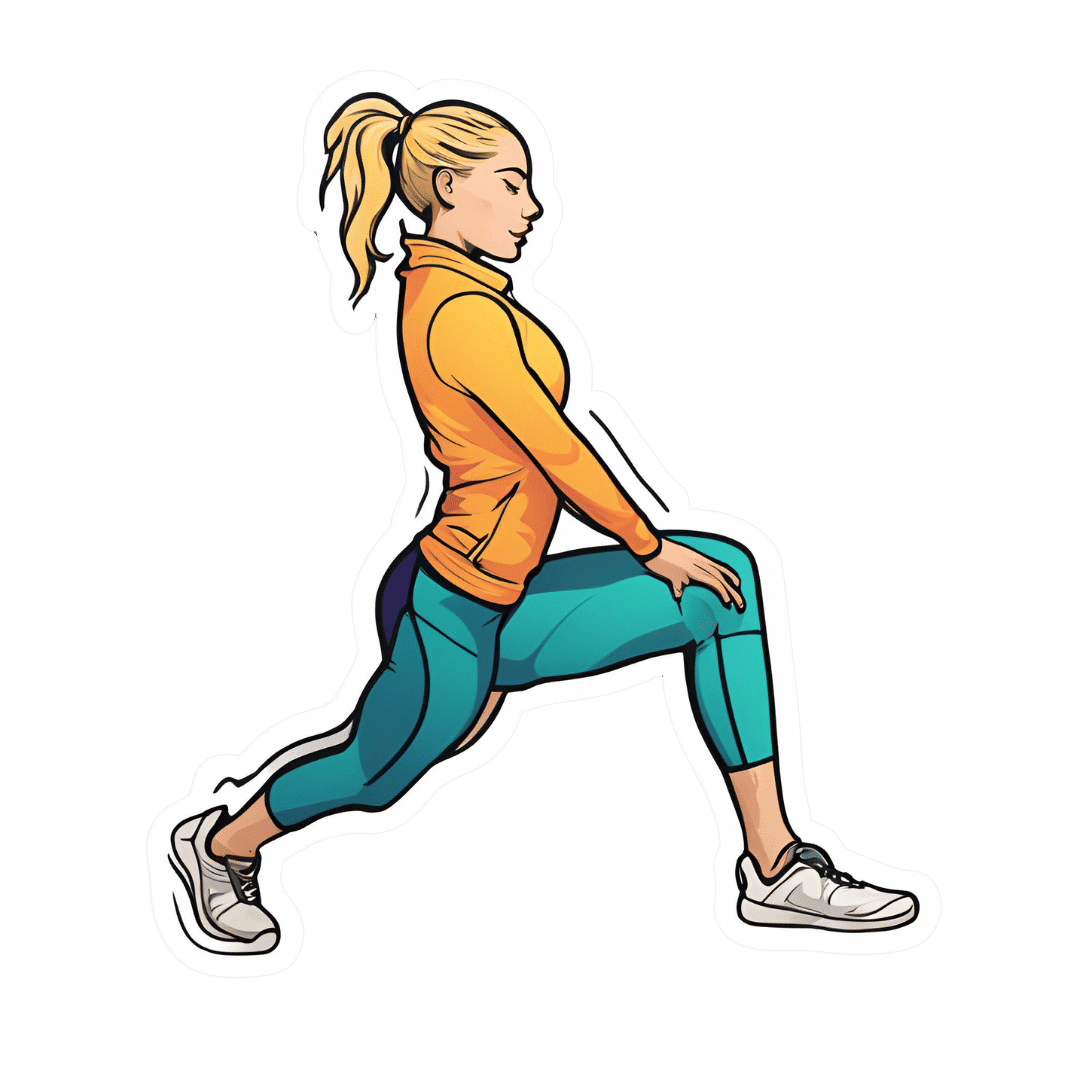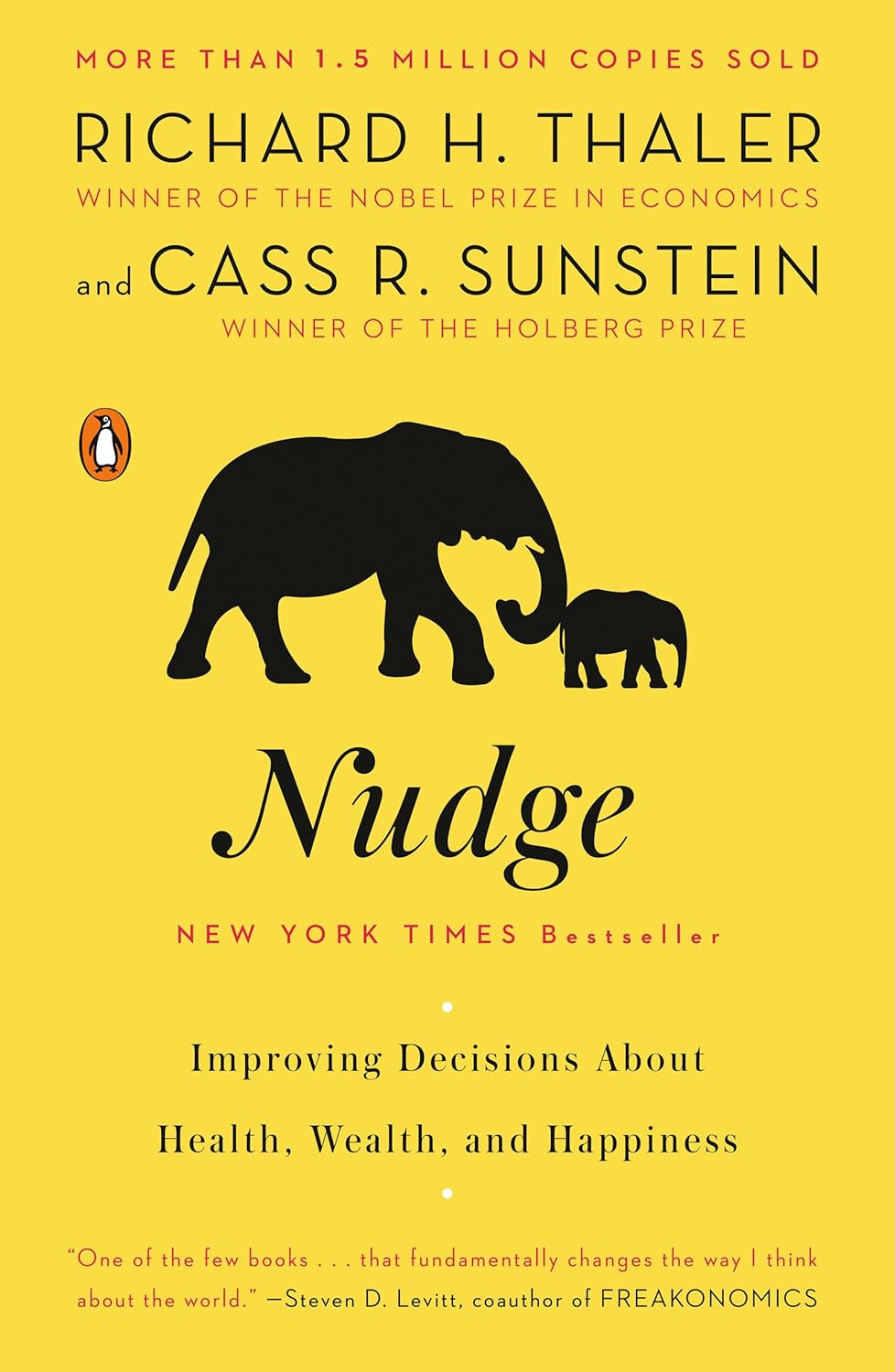
The Epigenetics Revolution – by Dr. Nessa Carey
10almonds is reader-supported. We may, at no cost to you, receive a portion of sales if you purchase a product through a link in this article.
If you enjoyed the book “Inheritance” that we reviewed a couple of days ago, you might love this as a “next read” book. But you can also just dive straight in here, if you like!
This one, as the title suggests, focuses entirely on epigenetics—how our life events can shape our genetic expression, and that of our descendants. Or to look at it in the other direction, how our genetic expression can be shaped by the life experiences of, for example, our grandparents.
The style of this book is very much pop-science, but contains a lot of information from hard science throughout. We learn not just about longitudinal population studies as one might expect, but also about the intricacies of DNA methylation and histone modifications, for example.
Depending on your outlook, you may find some of this very bleak (“great, I am shackled by what my grandparents did”) or very optimism-inducing (“oh wow, I’m not nearly so constrained by genetics as I thought; this stuff is so malleable!”). This is also the same author who wrote “Hacking The Code of Life“, by the way, but we’ll review that another day.
Bottom line: this book is the best one-shot primer on epigenetics that this reviewer has read (you may be wondering how many that is, and the answer is… about seven or so? I’m not good at counting).
Click here to check out The Epigenetics Revolution, and learn how dynamic you really are!
Don’t Forget…
Did you arrive here from our newsletter? Don’t forget to return to the email to continue learning!
Recommended
Learn to Age Gracefully
Join the 98k+ American women taking control of their health & aging with our 100% free (and fun!) daily emails:
-
The Keys to Good Mental Wellbeing
10almonds is reader-supported. We may, at no cost to you, receive a portion of sales if you purchase a product through a link in this article.
The Nine Keys To Good Mental Wellbeing
Today’s main feature is a bit “pop psychology”, but it has its underpinnings in actual psychology, and is especially useful if approached from that angle.
What it’s most popularly enjoyed as:
- A personality-typing system.
- People love little quizzes and identifiers and such.
What it’s actually really useful as:
- A tool for understanding why people (including ourselves) are the way we are
- A foundational knowledge for living better ourselves, and helping others too
This stems from the fairly simple principle, uncontroversial in psychology:
- We have needs, desires, and aversions
- We act in a way that tries to get our needs met and avoid suffering
- Thus: Need/Fear → Motivation → Action
The Enneagram
The Enneagram (ἐννέα = “nine” in Ancient Greek) system posits that we each have one fundamental need/fear (from a list of nine) that’s strongest for us. A deep-seated insecurity/longing, that we’ll go to almost any lengths to try to meet. Sometimes, in good ways, sometimes, bad.
The Nine Basic Fears/Insecurities, And Their Corresponding Needs/Desires:
- Fear of being a fundamentally bad, wrong person / Need to be good and correct
- Fear of being fundamentally unloveable / Need to be loved
- Fear of being fundamentally worthless / Need to be valued
- Fear of being like everyone else / Need to be different
- Fear of being useless / Need to be useful
- Fear of being outcast / Need to have a set place in the group
- Fear of missing out / Need to experience things
- Fear of being hurt or controlled / Need to be in control
- Fear of conflict / Need to be at peace
Of course, most of us have most of these fears/needs to some extent, though usually one will stand out—especially if we aren’t managing it well. The less healthy our coping mechanisms, the more obvious it is how we’re trying to overcompensate in some fashion. For example:
- A person who fears being wrong and so becomes a perfectionist rules-abider to a fault
- A person who fears being unloveable, and so exaggerates problems to get pity, as the next best thing
- A person who fears being worthless, and so exaggerates their accomplishments in order to be admired and valued
- A person who fears being like everyone else, and so descends into a “nobody could ever possibly understand me” black hole of pathos.
- A person who fears being useless, so burns themself out trying to be an omnicompetent Leonardo da Vinci without ever actually taking the time to stop and smell the flowers as Leonardo did.
- A person who fears being outcast, so becomes clingy, passive-aggressive, and suspicious
- A person who fears missing out, so tries to experience all the things all the time, ruining their health with dizzying highs and crushing lows.
- A person who fears being hurt or controlled, so becomes aggressive and domineering
- A person who fears conflict, so shuts down at the slightest hint of it
If we have healthier coping mechanisms, these same nine people can look a lot different, but in much more subtle ways because we’re not trying to overcompensate so badly:
- A person who lives their life rationally by principles that can be adapted as they learn
- A person who loves and is loved, as perhaps the most notable part of their character
- A person who sets reasonable goals and accomplishes them, and seeks to uplift others
- A person who creates and innovates, enriching their own life and the lives of others
- A person who is simply very competent and knowledgeable, without overstretching
- A person who is dependable and loyal, and a reliable part of something bigger than themself
- A person who is fun to be around and loves trying new things, while also knowing how to relax
- A person who develops their leadership skills and is a tower of strength for others
- A person who knows how to make peace and does so—by themself, and with others
By being aware of our own fears/insecurities that may drive our motivations and thus underpin our behaviors, we can usually manage them in a much more mindful fashion. Same goes when it comes to managing interactions with other people, too:
- Letting the Type 3 know you value them, not their accomplishments or what they can do for you.
- Appreciating the Type 5’s (varied or specialist) skills and knowledge.
- Giving love to a Type 2 unprompted, but on your own terms, with your own boundaries.
- And so on for other types
Or for yourself…
- As a Type 8, remembering that you can let go sometimes and let someone else be in charge.
- As a Type 1, catching yourself holding yourself (or others) to impossible standards, and then easing up on that a little.
- As a Type 9, remembering to stand up for yourself and others, however gently, but firmly.
- And so on for other types
If you’re unsure what to focus on, ask yourself: what’s your worst nightmare or greatest daydream? Then work out what it is about that, that makes it feel so bad or good.
Then, approach things mindfully. Catch yourself in your unhealthy coping mechanisms, and find healthy ones instead.
What if I get my type wrong? Or I get someone else’s type wrong?
Obviously it’s better to get them right for maximum effect, but you can never go too far wrong anyway… because we all have all nine of those qualities in us, it’s just a matter of how strong a factor each is for us. So in the worst case scenario, you’ll make someone feel more secure about something that was only a very minor insecurity for them, for example.
Or in the case of your own type, you may mistakenly think you’re acing being the world’s healthiest Type 5, until you realize you’re actually a Type 3 who thought learning all those things would make you more worthy (spoiler: those things are great, but you’re worthy already). Again, not the end of the world! No matter what, you’re learning and growing, and that’s good.
Want to delve further?
Read: The Nine Enneagram Type Descriptions (Basic, but more detailed descriptions than the above)
Read: How The Enneagram System Works (More complex. Now we’re getting into the more arcane stuff we didn’t have time for today—wings and lines, triads, health levels, directions of integration and disintegration, and more)
Like learning from books? Here are our top two picks, depending on your learning style:
- The Wisdom of the Enneagram – Very comprehensive textbook and guide to improving your coping mechanism and growing as a person.
- The Enneagram Made Easy – it explains it with cartoons!
We’d love to offer a quick free test here, but all the tests we could find either require paid registration or are wildly inaccurate, so we’ll not waste your time.
However, we do also think that working it out for yourself is better, as it means you have a handle on what those ideas, fears, insecurities, desires, needs, really mean to you—that way you can actually use the information!
We’ll close by repeating our previous advice: If you’re unsure what to focus on, ask yourself: what’s your worst nightmare or greatest daydream? Then work out what it is about those scenarios that make them so bad or good. That’ll help you find your real fears/needs, such that you can work on them.
Good luck!
Share This Post
-
Hummus vs Guacamole – Which is Healthier?
10almonds is reader-supported. We may, at no cost to you, receive a portion of sales if you purchase a product through a link in this article.
Our Verdict
When comparing hummus to guacamole, we picked the guacamole.
Why?
First up, let’s assume that the standards are comparable, for example that both have been made with simple whole foods. The hummus is mostly chickpeas with tahini and a little olive oil and some seasoning; the guacamole is mostly avocado with a little lime juice and some seasoning.
In terms of macronutrients, hummus has slightly more protein and fiber, 2x the carbohydrates (but they are healthy carbs), and usually slightly less fat (but the fats are healthy in both cases).
In terms of micronutrients, the hummus is rich in iron and B vitamins, and the guacamole is rich in potassium, magnesium, vitamins C, E, and K.
So far, it’s pretty much tied. What else is there to consider?
We picked the guacamole because some of its nutrients (especially the potassium, magnesium, and vitamin K) are more common deficiencies in most people’s diets than iron and B vitamins. So, on average, it’s probably the one with the nutrients that you need more of at any given time.
So, it was very very close, and it came down to the above as the deciding factor.
However!
- If you like one and not the other? Eat that one; it’s good.
- If you like both but feel like eating one of them in particular? Eat that one; your body is probably needing those nutrients more right now.
- If you are catering for a group of people? Serve both!
- If you are catering for just yourself and would enjoy both? Serve both! There’s nobody to stop you!
Want to read more?
You might like: Avocado Oil vs Olive Oil – Which is Healthier?
Enjoy!
Share This Post
-
5 Ways To Naturally Boost The “Ozempic Effect”
10almonds is reader-supported. We may, at no cost to you, receive a portion of sales if you purchase a product through a link in this article.
Dr. Jason Fung is perhaps most well-known for his work in functional medicine for reversing diabetes, and he’s once again giving us sound advice about metabolic hormone-hacking with dietary tweaks:
All about incretin
As you may gather from the thumbnail, this video is about incretin, a hormone group (the most well-known of which is GLP-1, as in GLP-1 agonists like semaglutide drugs such as Ozempic, Wegovy, etc) that slows down stomach emptying, which means a gentler blood sugar curve and feeling fuller for longer. It also acts on the hypothalmus, controlling appetite via the brain too (signalling fullness and reducing hunger).
Dr. Fung recommends 5 ways to increase incretin levels:
- Enjoy dietary fat: healthy kinds, please (e.g. nuts, seeds, eggs, etc—not fried foods), but this increases incretin levels more than carbs
- Enjoy protein: again, prompts higher incretin levels of promotes satiety
- Enjoy fiber: this is more about slowing digestion, but when it’s fermented in the gut into short-chain fatty acids, those too increase incretin secretion
- Enjoy bitter foods: these don’t actually affect incretin levels, but they can bind to incretin receptors, making the body “believe” that you got more incretin (think of it like a skeleton key that fits the lock that was designed to be opened by a different key)
- Enjoy turmeric: for its curcumin content, which increases GLP-1 levels specifically
For more information on each of these, here’s Dr. Fung himself:
Click Here If The Embedded Video Doesn’t Load Automatically!
Want to learn more?
You might also like to read:
- Semaglutide for Weight Loss?
- Ozempic vs Five Natural Supplements
- How To Prevent And Reverse Type 2 Diabetes ← this was our “Expert Insights” feature on Dr. Fung’s work
Take care!
Share This Post
Related Posts
-
If You’re Not Flexible, These Are The Only 3 Stretches You Need, To Fix That
10almonds is reader-supported. We may, at no cost to you, receive a portion of sales if you purchase a product through a link in this article.
If you can’t put your leg behind your head while standing, try doing the splits against a wall first, and progress from there! ← text version of an item from a “if you can’t do this yet, try this first” picture set this writer saw on Instagram once upon a time
So, what if you’re more at the point of not quite being able to touch your toes yet?
From zero to…
Liv, of LivInLeggings fame, has these three starter-stretches that are actually starter-stretches:
Stretch 1: Reverse Tabletop with Foot Tuck Variation
- Sit on the floor, feet slightly wider than your hips, lean back onto your hands (fingertips pointing outward).
- Lift your hips towards a reverse tabletop, engage your glutes, and flatten the front of your hips.
- Add a foot tuck variation by stepping one foot back and pressing your weight forward.
Benefits:
- Stretches multiple muscles, including the soles of the feet.
- Improves foot arches, balance, and stability.
- Loosens fascia, enhancing flexibility in subsequent stretches.
Stretch 2: Squat to Forward Fold
- Start in a low squat (feet wider than your hips, toes mostly forward).
- Alternate between a low squat and a forward fold, keeping your hands on the floor or your toes.
Benefits:
- Stretches hamstrings, glutes, and lower back.
- Maintains good form and avoids overstraining.
Stretch 3: Side Lunge with Side Body Reach
- Begin in a tall kneeling position, step one foot out to the side (toes pointing outward).
- Lunge your hips towards your front ankle, keeping your tailbone tucked.
- Add a side body reach by resting your forearm on your thigh and reaching the other arm overhead.
- For a deeper stretch, cradle the back of your head with your hand, pressing lightly for a tricep stretch.
Benefits:
- Stretches inner thighs, lats, and triceps.
- Improves posture, shoulder mobility, and low squat ability.
For more on each of these plus visual demonstrations, enjoy:
Click Here If The Embedded Video Doesn’t Load Automatically!
Want to learn more?
You might also like to read:
Test For Whether You Will Be Able To Achieve The Splits
Take care!
Don’t Forget…
Did you arrive here from our newsletter? Don’t forget to return to the email to continue learning!
Learn to Age Gracefully
Join the 98k+ American women taking control of their health & aging with our 100% free (and fun!) daily emails:
-
Bacopa Monnieri: A Well-Evidenced Cognitive Enhancer
10almonds is reader-supported. We may, at no cost to you, receive a portion of sales if you purchase a product through a link in this article.
Bacopa monnieri: a powerful nootropic
Bacopa monnieri is one of those “from traditional use” herbs that has made its way into science.
It’s been used for at least 1,400 years in Ayurvedic medicine, for cognitive enhancement, against anxiety, and some disease-specific treatments.
See: Pharmacological attributes of Bacopa monnieri extract: current updates and clinical manifestation
What are its claimed health benefits?
Bacopa monnieri is these days mostly sold and bought as a nootropic, and that’s what the science supports best.
Nootropic benefits claimed:
- Improves attention, learning, and memory
- Reduces depression, anxiety, and stress
- Reduces restlessness and impulsivity
Other benefits claimed:
- Antioxidant properties
- Anti-inflammatory properties
- Anticancer properties
What does the science say?
Those last three, the antioxidant / anti-inflammatory / anticancer properties, when something has one of those qualities it often has all three, because there are overlapping systems at hand when it comes to oxidative stress, inflammation, and cellular damage.
Bacopa monnieri is no exception to this “rule of thumb”, and/but studies to support these benefits have mostly been animal studies and/or in vitro studies (i.e., cell cultures in a petri dish in lab conditions).
For example:
- Inhibition of lipoxygenases and cyclooxygenase-2 enzymes by extracts isolated from Bacopa monnieri
- Assessing the anti-inflammatory effects of Bacopa-derived bioactive compounds using network pharmacology and in vitro studies
- The evolving roles of Bacopa monnieri as potential anticancer agent: a review
In the category of antioxidant and anti-inflammatory effects in the brain, sometimes results differ depending on the test population, for example:
- Neuroprotective effects of Bacopa monnieri in experimental model of dementia (it worked for rats)
- Use of Bacopa monnieri in the treatment of dementia due to Alzheimer’s disease: systematic review of randomized controlled trials (it didn’t work for humans)
Anything more promising than that?
Yes! The nootropic effects have been much better-studied in humans, and with much better results.
For example, in this 12-week study in healthy adults, taking 300mg/day significantly improved visual information processing, learning, and memory (tested against placebo):
The chronic effects of an extract of Bacopa monnieri on cognitive function in healthy human subjects
Another 12-week study showed older adults enjoyed the same cognitive enhancement benefits as their younger peers:
Children taking 225mg/day, meanwhile, saw a significant reduction in ADHD symptoms, such as restlessness and impulsivity:
And as for the mood benefits, 300mg/day significantly reduced anxiety and depression in elderly adults:
In summary
Bacopa monnieri, taken at 300mg/day (studies ranged from 225mg/day to 600mg/day, but 300mg is most common) has well-evidenced cognitive benefits, including:
- Improved attention, learning, and memory
- Reduced depression, anxiety, and stress
- Reduced restlessness and impulsivity
It may also have other benefits, including against oxidative stress, inflammation, and cancer, but the research is thinner and/or not as conclusive for those.
Where to get it
As ever, we don’t sell it (or anything else), but for your convenience, here is an example product on Amazon.
Enjoy!
Don’t Forget…
Did you arrive here from our newsletter? Don’t forget to return to the email to continue learning!
Learn to Age Gracefully
Join the 98k+ American women taking control of their health & aging with our 100% free (and fun!) daily emails:
-
Nudge – by Richard Thaler & Cass Sunstein
10almonds is reader-supported. We may, at no cost to you, receive a portion of sales if you purchase a product through a link in this article.
How often in life do we make a suboptimal decision that ends up plaguing us for a long time afterwards? Sometimes, a single good or bad decision can even directly change the rest of our life.
So, it really is important that we try to optimize the decisions we do make.
Professors Richard Thaler and Cass Sunstein look at all kinds of decision-making in this book. Their goal, as per the subtitle, is “improving decisions about health, wealth, and happiness”.
For the most part, the book concentrates on “nudges”. Small factors that influence our decisions one way or another.
Most importantly: that some of them are very good reasons to be nudged; others, very bad ones. And they often look similar.
Where this book excels is in highlighting the many ways we make decisions without even thinking about it… or we think about it, but only down a prescribed, foreseen track, to an externally expected conclusion (for example, an insurance company offering three packages, but two of them exist only to direct you to the “correct” choice).
A weakness of the book is that in some aspects it’s a little inconsistent. The authors describe their economic philosophy as “libertarian paternalism”, and as libertarians they’re against mandates, except when as paternalists they’re for them. But, if we take away their labels, this boils down to “some mandates can be good and some can be bad”, which would not be so inconsistent after all.
Bottom line: if you’d like to better understand your own decision-making processes through the eyes of policy-setting economists (especially Sunstein, who worked for the White House Office of Information & Regulatory Affairs) whose job it is to make sure you make the “right” decisions, then this is a very enlightening book.
Click here to check out Nudge and improve your decision-making clarity!
Don’t Forget…
Did you arrive here from our newsletter? Don’t forget to return to the email to continue learning!
Learn to Age Gracefully
Join the 98k+ American women taking control of their health & aging with our 100% free (and fun!) daily emails:







